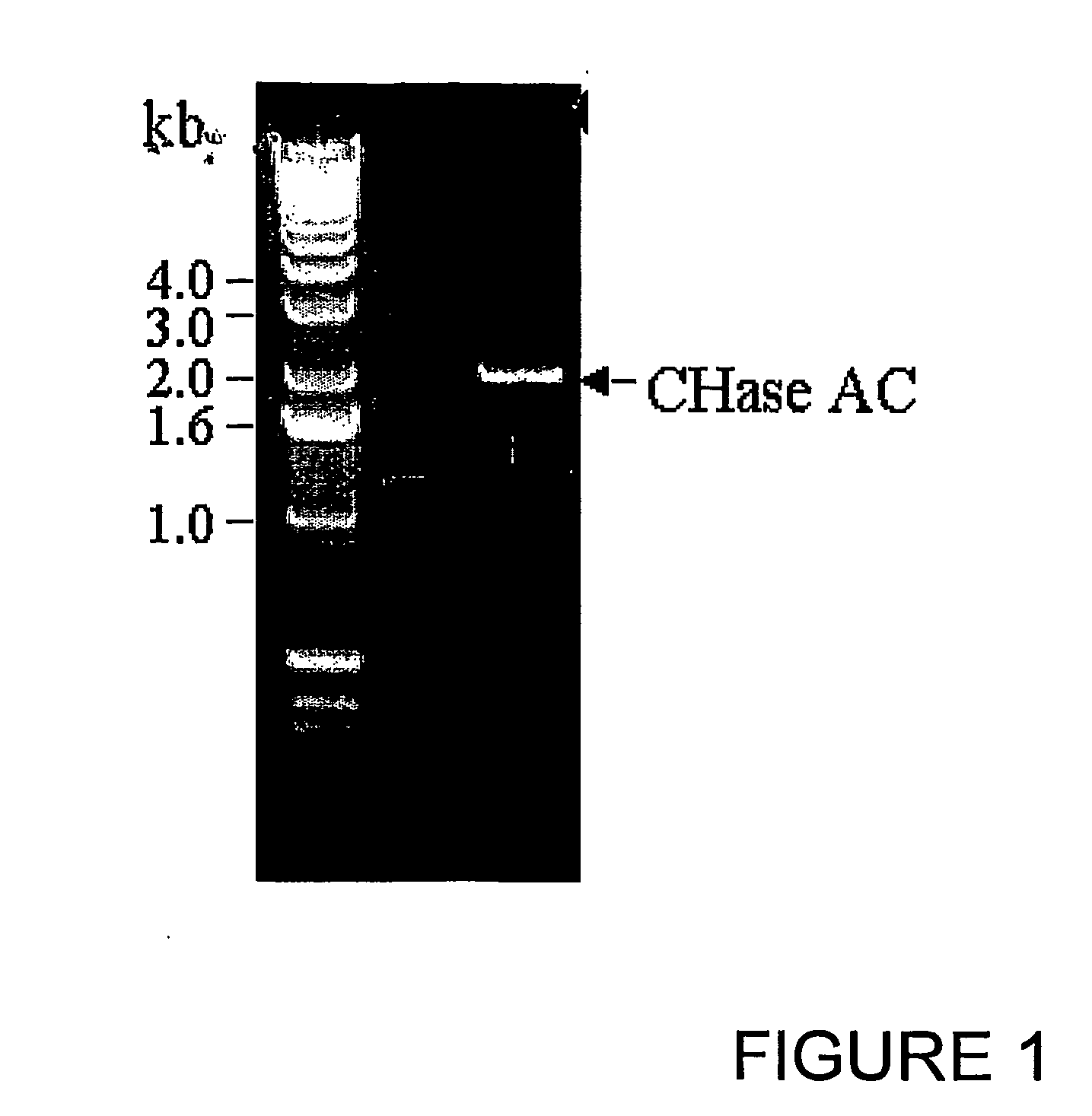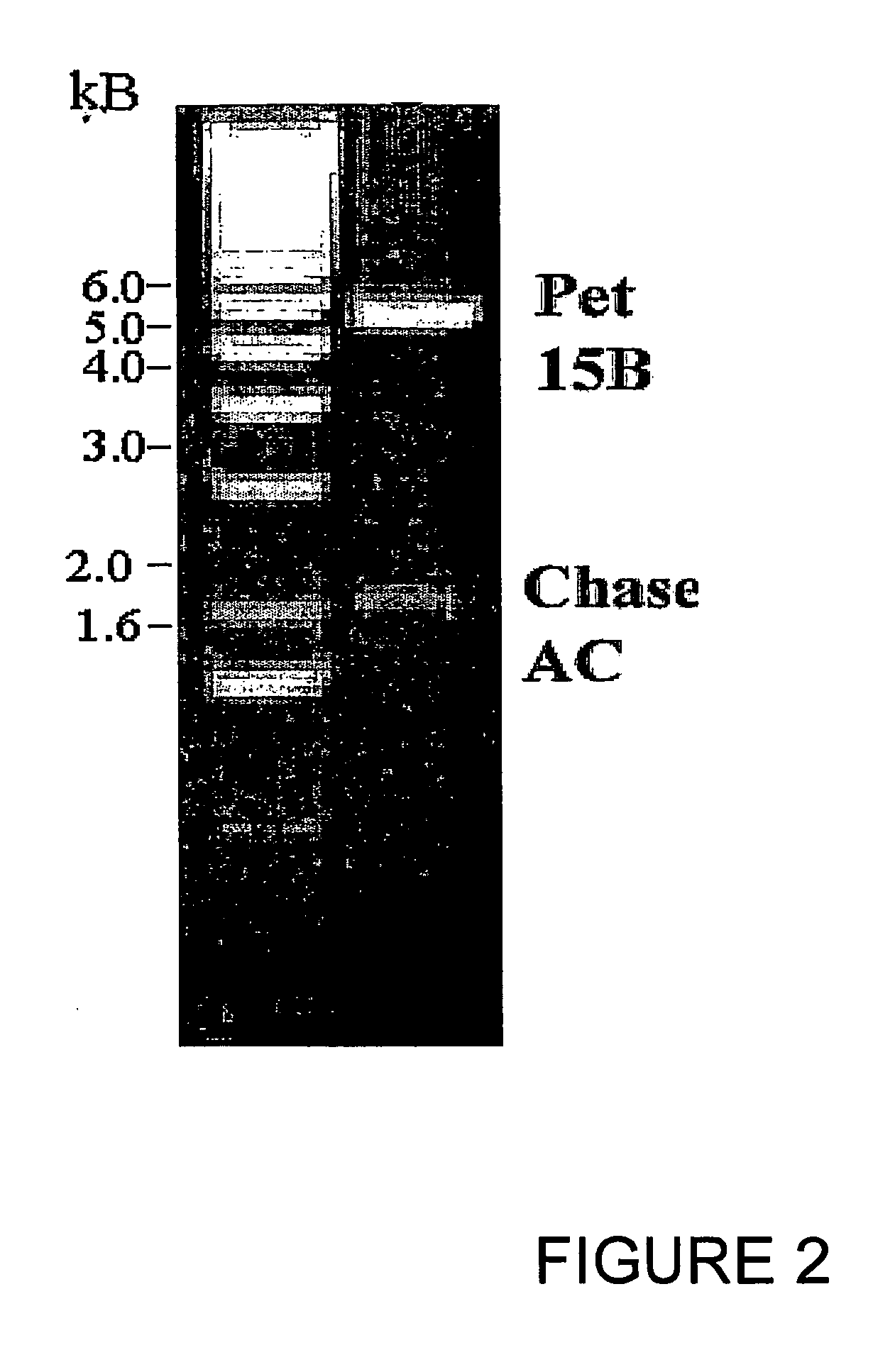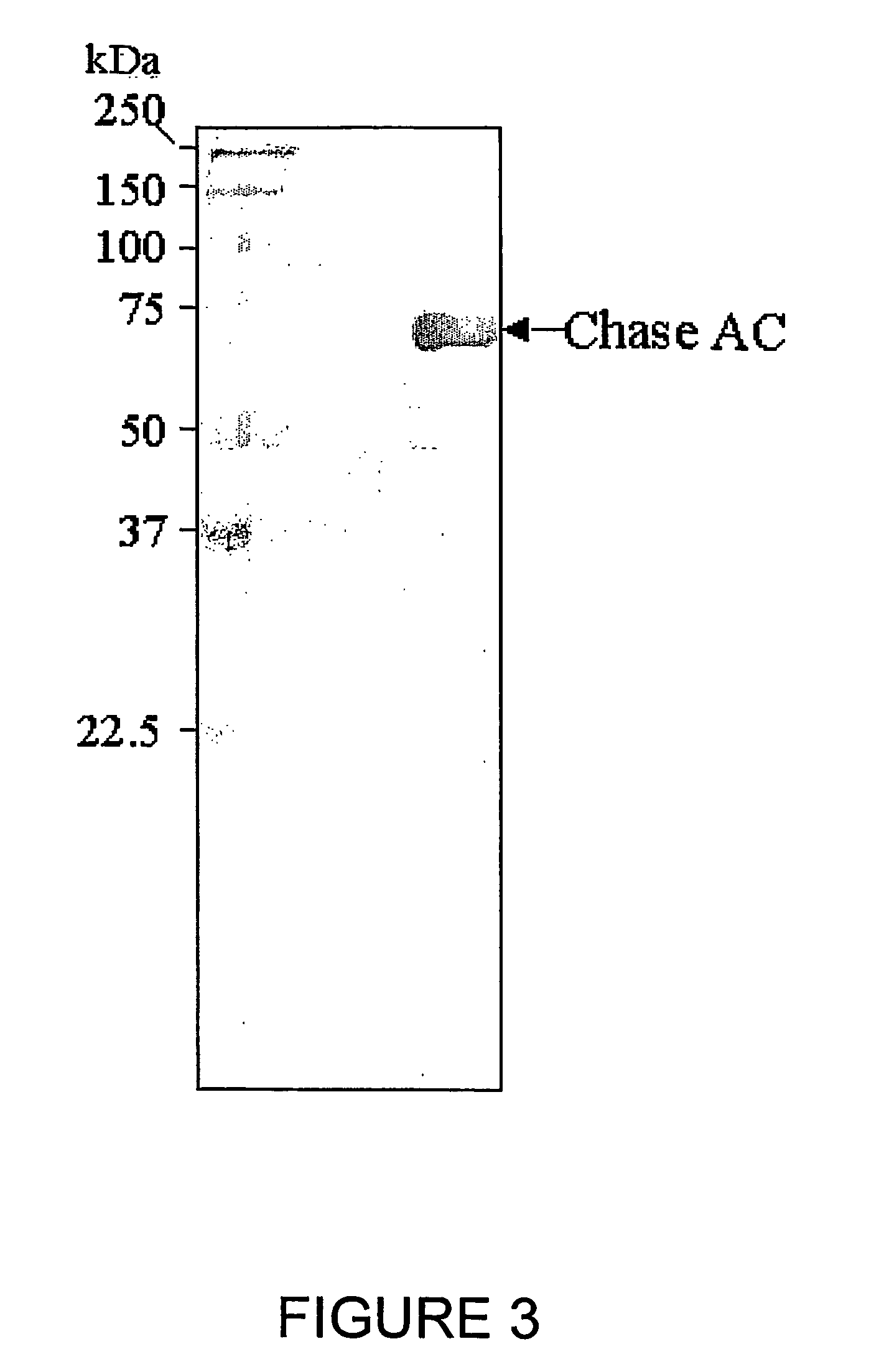Chimeric protein
a technology of chimeric protein and chimeric peptide, which is applied in the field of chimeric protein, can solve the problems that the use alone of regenerative protein may not be sufficient to effect the loss of axonal and dendrite regrowth in the central nervous system with evolutionary progression, and the insufficient use of regenerative protein alone to achieve repair of a damaged nervous system, etc., to achieve the effect of promoting and enhancing neural regeneration
- Summary
- Abstract
- Description
- Claims
- Application Information
AI Technical Summary
Benefits of technology
Problems solved by technology
Method used
Image
Examples
example 1
Cloning of Chondroitinase AC from Flavobacterium heparinum:
[0092]Flavobacterium heparinum (ATCC) was grown in LB (Luria broth) at 25° C. for 4 days. The bacteria were spun down by centrifugation and genomic DNA was isolated by DNeasy Tissue kit (Qiagen). PCR primers were synthesized (Pojasek et. al (2001), Biochem Biophys. Res Com, 286, 343-351) with a NdeI restriction site at the 5′ end and a BamHI site at the 3′ end having sequences 5′-CATATGCAGCAGACCGGTACTGCA-3′ (Seq. ID No. 1) and 5′-GGATTCTCAGTGCTCTTTATTTCT-3′ (Seq. ID No. 2) respectively to synthesize the mature protein. One microgram of the genomic DNA was used in a 50 μl PCR reaction containing 10 mM of each dNTP (DATP, dTTP, dCTP and dGTP), 50 pmol each of forward and reverse primers, 1 mM of MgSO4, and 5 units of Tfl DNA polymerase (Promega). The 2.0 kb PCR product was ligated into pCR 2.1 vector TOPO cloning kit, Invitrogen) and transformed into OneShot competent cells (Invitrogen). Plasmid DNA was isolated from a numbe...
example 2
Cloning of Chondroitinase B from Flavobacterium heparinum:
[0095] Similarly, chondroitinase B was amplified as above using the primers with a NdeI restriction site at the 5′ end and a BamHI site at the 3′ end having sequences 5′-CATATGCAGGTTGTTGCTTCAAAT-3′ (Seq. ID No. 3) and 5′-GATCCTCAGTGCTCTTTATTTCT-3′ (Seq. ID No. 4) respectively to synthesize the mature protein. One microgram of the genomic DNA was used in a 50 μl PCR reaction containing 10 mM of each dNTP (dATP, dTTP, dCTP and dGTP), 50 pmol each of forward and reverse primers, 1 mM of MgSO4, and 5 units of Tfl DNA polymerase (Promega). The 1.5 kb PCR product was ligated into pCR 2.1 vector (TOPO cloning kit, Invitrogen) and transformed into OneShot competent cells (Invitrogen). Plasmid DNA was isolated from a number of clones screened by digestion with EcoRI restriction enzyme and the positive clones selected having the 1.5 kb insert. The genes were further cloned into pET 15b (Novagen) at the NdeI and BamHI sites and confirm...
example 3
Cloning of Chondroitinase ABC from Proteus vulgaris:
[0098] Genomic DNA was isolated from Proteus vulgaris using DNeasy Tissue kit (Qiagen). PCR primers were synthesized with an NdeI restriction site at the 5′ end and a BamHI site at the 3′ end having sequences 5′-CAT ATG GCC ACC AGC AAT CCT GCA TTT G-3′(Seq. ID No. 5) and 5′-GGA TCC TCA AGG GAG TGG CGA GAG-3′ (Seq. ID No. 6), respectively. The 3.0 kb PCR product was ligated into pCR 2.1 vector (TOPO cloning kit, Invitrogen) and transformed into OneShot competent cells (Invitrogen). Plasmid DNA was isolated from a number of clones screened by digestion with EcoRI restriction enzyme and the positive clones selected having the 3.0 kb insert. The genes were further cloned in pET 15b (Novagen) at the NdeI and BamHI sites and confirmed by DNA sequencing.
Expression and purification of chondroitinase ABC:
[0099] The plasmid DNA containing the chondroitinase ABC in pET15b is transformed in BL21(DE3) for expression. Bacterial cultures in ...
PUM
 Login to View More
Login to View More Abstract
Description
Claims
Application Information
 Login to View More
Login to View More - R&D
- Intellectual Property
- Life Sciences
- Materials
- Tech Scout
- Unparalleled Data Quality
- Higher Quality Content
- 60% Fewer Hallucinations
Browse by: Latest US Patents, China's latest patents, Technical Efficacy Thesaurus, Application Domain, Technology Topic, Popular Technical Reports.
© 2025 PatSnap. All rights reserved.Legal|Privacy policy|Modern Slavery Act Transparency Statement|Sitemap|About US| Contact US: help@patsnap.com



